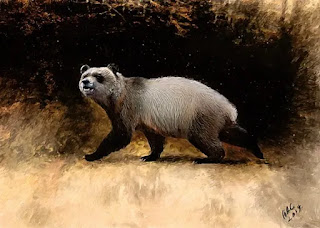Europe’s Last Panda? New Discovery of Species Closely Related to Giant Panda

Reconstruction of A. nikolovi sp. nov. from Bulgaria. Artwork by Velizar Simeonovski, Chicago. Credit: © Velizar Simeonovski, Chicago Fossilized teeth originally found in the 1970s actually belong to a new, sizeable close relative of the modern giant panda. A new species of panda has been uncovered by scientists who state it is currently the last known and “most evolved” European giant panda. It lumbered through the forested wetlands of Bulgaria around six million years ago. Unearthed from the bowels of the Bulgarian National Museum of Natural History, two fossils of teeth originally discovered in the eastern European nation in the late 1970s, provide new evidence of a sizable relative of the modern giant panda. Unlike today’s iconic black and white bear, however, it was not purely reliant on bamboo for sustenance. “Although not a direct ancestor of the modern genus of the giant panda, it is its close relative,” explains the Museum’s Professor Nikolai Spassov, whose findings are ...












